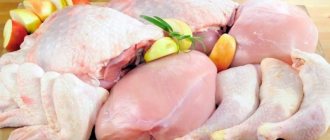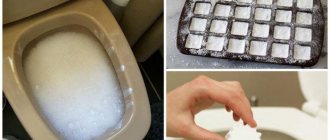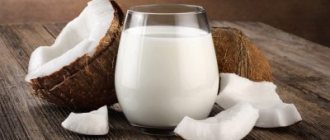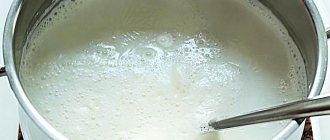Very often, people who watch their diet buy dried fruits. If you have your own personal garden, you can prepare dried fruits yourself. Regardless of where you buy or prepare it, it is useful to know how to preserve dried fruits correctly at home. This will preserve the beneficial properties and pleasant taste. More information about where it is best to store dried fruits will be discussed below.
Preparing dried fruits for storage
Dried fruits that are purchased in stores and are factory packaged, as a rule, are stored well and do not cause any special problems. Although here a lot depends on the integrity of the manufacturer.
Self-dried fruits should be carefully prepared for storage:
- in the process of preparing for drying, cut the fruit into equal slices so that they dry evenly;
- While drying, stir the dried fruits periodically, removing spoiled ones, turning them over and removing the finished ones;
- before storing fruits, sort them carefully, removing those that look unpresentable, are not dried and are beginning to deteriorate;
- In the place where the fruit will be stored, place products that have a strong smell (mint, oregano, citrus fruits) to repel possible insects.
The benefits and harms of dried apples for human health, calorie content
Moths do not appear on their own. Most often, you yourself bring it into your home with food; less often, an adult may fly into a window or an open door. As a rule, contamination occurs as a result of violation of the storage conditions of the product, and this can happen both in the factory warehouse and in the store itself.
We suggest you read: Holes on strawberry leaves, what to do
How can you tell if moths have started to multiply in apples? At the bottom of containers with dried fruits you will probably find not only white worms, but also strange light pellets, as well as traces of a silk cocoon. Food moths can multiply in other places besides feeding, and you will most often find them near cabinets or on the walls of the kitchen.
Many residents often confuse ordinary clothes or fur moths with food moths, which, in turn, also have their own subspecies. Most species of food moths (moths) can be identified by their size and wing patterns.
When folded, the wings of the grain moth seem to be divided into two parts - the upper part, from the thoracic region to the middle of the wings, is light, and the lower part is darker, with a pair of transverse black stripes.
As for the flour moth, its wings are brown with large dark areas (from the side of the head and wing tips), which are bordered by a white line.
The clothes moth is distinguished by its beige color, small size (up to 1 cm), wings tightly pressed to the body and golden or reddish hairs on the head.
Cut the apples into equal slices. This is necessary so that they dry evenly.
These dried fruits consist of a large number of macro- and microelements, various vitamins that the body needs for proper functioning:
- vitamins K, E and B regulate blood circulation;
- ascorbic and other acids contribute to proper brain function;
- Selenium, copper, magnesium, iodine, copper, zinc, manganese, iron and other elements saturate the body and increase immunity.
Dried apples contain the following substances:
- Minerals – magnesium, iron, iodine (improves blood quality, cardiovascular system, metabolism and supports the functioning of the hormonal system).
- Phytoncides (stop the growth of pathogenic bacteria and fungi).
- Tanning (have anti-inflammatory and antibacterial qualities).
- Organic acids - chlorogenic, malic, tartaric, arabic acids (resist infections, regulate acid-base balance).
- Sugar – sucrose, fructose, glucose (restore strength, promote rapid saturation of the body).
- Polysaccharide pectin components (reduce cholesterol levels).
- Flavanoids (resist cell damage by blocking the action of free radicals).
The calorie content of dried fruits is 231 kcal per 100 grams of product.
Using dried apples, a person fills his body with a large number of useful elements, but there are also some contraindications.
Apple dried fruits promote good digestion due to the content of pectin, dietary fiber and fiber. The components of these fruits, proteins, acids, essential oils and phytoncides, improve metabolism and have a beneficial effect on the formation of microflora in the intestines.
Where is the best place to store dried fruits in an apartment?
In order to prevent dried fruits from spoiling, it is important to observe 2 conditions for quality storage:
- Temperature: ideally it should be 10 degrees (about the same numbers on the balcony in winter). It’s a good idea to store dried fruits in a pantry or other darkened room, away from the electric stove and radiator.
- Humidity: optimal level from 16 to 24%. The average apartment has a humidity of 70%, which is why dried fruits get wet very quickly and begin to spoil.
How to store dried fruits?
The choice of containers for storing dried fruits plays a decisive role in extending their shelf life:
- Glass jar: dried fruits are visible in it, and pests can be monitored. Open the lid weekly to allow fresh air in and remove accumulated condensation.
- Wooden containers: not very convenient due to the high ability of the material to absorb moisture.
- Ceramic jar with an airtight seal: does not absorb foreign odors, requires regular opening to let in air.
- Plastic container: does not allow moisture to penetrate inside, ideal for storage in the refrigerator. To access air, you just need to move a special valve. This material absorbs odors, so only one type of product can be stored in it.
- Bags made of canvas and cotton fabric: provide air circulation, but allow moisture inside. To remove excess moisture, add a little salt to the bag.
- Vacuum Jar: Excellent at keeping dried fruits intact, it maintains an air-free environment in which there is no room for germs.
Features of storing various dried fruits
Each type of dried fruit requires compliance with subtleties that guarantee long-term protection of the fruit without the formation of mold and the occurrence of pests.
Dried apricots:
- dried fruits tolerate freezing well and are stored in the freezer for up to one and a half years, without losing their valuable properties;
- the optimal storage temperature is from 14 to 16 degrees, so it is not recommended to store the dryer near batteries;
- air humidity should not exceed 70%;
- Apricots are best stored in glass and ceramic jars, closed with airtight lids (made of polyethylene or silicone);
- It is better to store dried apricots in small bags so that mold and bugs do not spoil all the products.
Prunes:
- stores well at room temperature;
- it is more convenient to keep prunes in linen bags, paper bags and glass and ceramic containers, closed with a tight lid;
- the place where prunes will be stored should be dark and dry;
- Products that have a strong odor (tobacco, spices and smoked meats) should not be placed next to prunes;
- Prunes keep well in the refrigerator if packed in vacuum bags or plastic containers.
Raisin:
- the optimal storage temperature is 17 degrees;
- the absence of fumes from the stove, kettle and heat from the radiator is very important;
- raisins fit well in containers made of glass, tin and plastic;
- the container should not be closed very tightly to allow air to enter the product (containers should be ventilated periodically);
- You cannot store raisins at home for more than 2 months;
- to remove excess moisture from the cabinet in which the raisins are stored, place a small amount of table salt in it;
- To prevent pests from attacking dried fruits, dried mint sprigs are placed next to them.
Dried apples
- dried apple fruits are best stored indoors where the temperature is 10 degrees;
- the humidity in such a place should be very low, constant air circulation is important;
- boxes with dried apples should not stand on the floor; it is better to place them on cabinet shelves;
- Apples are not placed in cellophane and paper; it is preferable to choose plastic or canvas bags.
Individual approach
In addition to following the basic rules, the housewife or owner must take into account the type of fruit they are preparing for the winter. In this matter, an individual approach is especially important. Because dried fruits are very capricious: dried apricots require one thing, and apple slices require something completely different.
- Dried fruit mixture. According to the rules, each variety of dried fruits and berries must be stored separately. It is not recommended to mix them. But if the preparation is intended for preparing uzvar or compote during the cold season, you can store it in a single container. However, before mixing the treats, they need to be thoroughly dried in the oven. This way you can equalize the internal humidity of each individual product. After all, initially these indicators are different.
- Dried apricots. Homemade dried apricots should be stored away from wet prunes. Dried apricot pieces will be infused with the spirit of dried plums in no time. And after some time they will become damp due to differences in humidity with prunes.
- Raisin. Raisins can be mixed with dried apricots, but this is not advisable. Often these products are used separately in cooking, rather than in tandem. Therefore, it is better to store them separately, allocating a special hermetically sealed container for each.
- Natural candied fruits from tropical fruits. As well as dried bananas and apple slices. It is important for these products to have access to oxygen. Therefore, the optimal vessel for storing them is a bag made of thick cotton fabric. There is one bad thing: such packaging will not save you from pests. But you can fight this. It is enough to place a bowl of salt and a handful of fresh or dried mint next to the bag. Salt will help get rid of excess moisture, and the mint aroma will repel moths, bugs and other small ill-wishers.
During storage, natural delicacies must be periodically shaken and slightly dried. About once every four to eight weeks.
How long can dried fruits be stored?
You should not purchase and store very large quantities of dried fruits at home. It is advisable to have on hand a supply that will last for a maximum of 4 months. As a rule, if the storage is kept hermetically sealed, nothing happens to the fruit during this period: mold does not form and insects do not appear.
If you store each type of dried fruit separately, maintaining ideal conditions of light, humidity and air temperature, their storage time can easily be increased to one year.
Dangerous Beauty
The main criterion for the quality of purchased drying is its appearance. Having seen beautiful, shiny, appetizing fruits that just beg to be put into your mouth, you should... avoid them.
Beauty in this case is not evidence of the exceptional benefits of the product, but the result of treatment with chemicals . They are the ones who turn dried apricots and light raisins sunny yellow, give the fruits an elegant, glossy skin, complementing the effect produced on an inexperienced buyer with a truly heavenly aroma.
Real dried fruits, dried naturally, are inconspicuous in appearance , lack bright colors and have a weak, natural odor. Only such fruits are a rare storehouse of vitamins and can really support health.
Advice
It is better to buy dried fruits from grandmothers at the market than in supermarkets, where they sell industrially processed products that have lost up to 60% of their nutrients. Simple sets of apples, pears, plums, apricots and cherries are much more valuable than mixes of exotic fruits.
How to deal with mold on dried fruits
It is not so difficult to protect food from mold growing on them; it is important to observe the correct storage conditions:
- maintain a low level of humidity, preventing the development of dampness;
- Once every 3 weeks, sort through the stocks, removing damaged fruits;
- after inspection, be sure to stir the dried fruit evenly;
- On the floor of the room where they are stored, place a container with salt or rice poured into it.
If you follow the rules, mold will not appear on dried fruits. If it appears, then the damaged fruits should be thrown away, and those lying next to them should be thoroughly calcined in the oven for 1 hour at a temperature of 70 degrees.
General information
When electric dryers for fruits and vegetables appeared on sale, making preparations became much easier. This technique does not take up much space, but it does the job that the sun used to do. The housewife only needs to cut the necessary fruits into slices or circles and spread them over the entire surface of the plastic molds. The dryer can be used for any fruit, berries, mushrooms, and vegetables.
Candied fruits, prepared with your own hands without chemicals, are an excellent treat for the smallest children, and for adults too. We understand how to prepare them, but not yet how to store them.
REFERENCE! To ensure that dried fruits do not spoil during storage, they need to be properly stored.
How to protect dried fruits from pests?
To prevent pests from reaching the storehouse of vitamins and minerals by destroying dried fruits, you should adhere to the basics of their storage:
- store fruits only in containers suitable for each type, ideally in ironed fabric bags;
- add a little dry mint or basil to the dried fruits to repel pests;
- place the fruits in the refrigerator (if the specific type of product allows this);
- Close the container hermetically to prevent moths from infesting it;
- Be sure to check purchased and dried dried fruits for the presence of insects and their larvae.
Prevention
By following simple prevention rules, you can reduce the likelihood of fruit moths to a minimum.
Basic Rules:
- maintain optimal mode;
- store different types of drying in separate containers;
- periodically ventilate cabinets;
- once a month, sort through the supplies and, if necessary, dry them in the oven;
- lay out special traps, cassettes, tablets against the pest and its larvae on the shelves;
- carefully inspect products when purchasing in a store.











